Legionella Infections: The bacterium Legionella can cause a serious type of pneumonia called LD in persons at risk. Those at risk include persons who are at least 50 years old, smokers, or those with underlying medical conditions such as chronic lung disease or immunosuppression. Outbreaks have been linked to poorly maintained water systems in buildings with large or complex water systems including hospitals and long-term care facilities. Transmission can occur via aerosols from devices such as showerheads, cooling towers, hot tubs, and decorative fountains.
Facility Requirements to Prevent Legionella Infections: Facilities must develop and adhere to policies and procedures that inhibit microbial growth in building water systems that reduce the risk of growth and spread of legionella and other opportunistic pathogens in water.
LD, a severe sometimes fatal pneumonia, can occur in persons who inhale aerosolized droplets of water contaminated with the bacterium Legionella. In a recent review of LD outbreaks in the United States occurring in 2000–2014, 19% of outbreaks were associated with long-term care facilities and 15% with hospitals. The rate of reported cases of legionellosis, which comprises both LD and Pontiac fever (a milder, self-limited, influenza-like illness) has increased 286% in the US during 2000–2014, with approximately 5,000 cases reported to the Centers for Disease Control and Prevention (CDC) in 2014. Approximately 9% of reported legionellosis cases are fatal.
The Centers for Medicare & Medicaid Service (CMS) is aware of multiple recent LD outbreaks in hospitals and long-term care facilities as reported by the CDC, state and local health departments, or investigated by State Survey Agencies (SA).
In man-made water systems, Legionella can grow and spread to susceptible hosts, such as persons who are at least 50 years old, smokers, and those with underlying medical conditions such as chronic lung disease or immunosuppression. Legionella can grow in parts of building water systems that are continually wet, and certain devices can spread contaminated water droplets via aerosolization. Examples of these system components and devices include:
- Hot and cold water storage tanks
- Water heaters
- Water-hammer arrestors
- Pipes, valves, and fittings
- Expansion tanks
- Water filters
- Electronic and manual faucets
- Aerators
- Faucet flow restrictors
- Showerheads and hoses
- Centrally-installed misters, atomizers, air washers, and humidifiers
- Nonsteam aerosol-generating humidifiers
- Eyewash stations
- Ice machines
- Hot tubs/saunas
- Decorative fountains
- Cooling towers
- Medical devices (such as CPAP machines, hydrotherapy equipment, bronchoscopes, heater-cooler units)
Outbreaks generally are linked to environmental reservoirs in large or complex water systems, including those found in healthcare facilities such as hospitals and long-term care facilities. Transmission from these water systems to humans requires aerosol generation, as can occur from showerheads, cooling towers, hot tubs, and decorative fountains. Legionella is less commonly spread by aspiration of drinking water or ice. Only one case of possible person-to-person transmission has been reported.
Learn More
https://wwwn.cdc.gov/elite/public/memberlist.aspx
CDC ELITE Certified for the detection of Legionella
Let us help you meet the CMS Mandate for your healthcare facility

